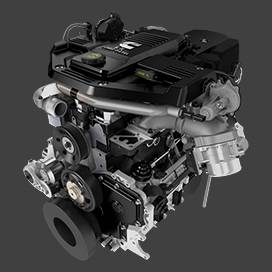Nov . 30, 2024 05:25 Back to list
Understanding Rear Brake Drum Shoes for Improved Vehicle Performance and Safety
Understanding Rear Brake Drum Shoes Essential Components for Vehicle Safety
When it comes to vehicle safety and performance, one of the most critical components is the braking system. Among the various elements that comprise this system, rear brake drum shoes play a pivotal role, particularly in vehicles equipped with drum brakes. Understanding their function, construction, maintenance, and the common issues can help vehicle owners make informed decisions regarding their brakes and overall safety on the road.
What Are Rear Brake Drum Shoes?
Rear brake drum shoes are integral components of the drum brake assembly, typically found in the rear wheels of many vehicles, especially older models. Unlike disc brakes, which employ rotors and calipers, drum brakes utilize a cylindrical drum that rotates with the wheel. The brake shoes are curved friction materials that expand against the inner surface of the drum when the brake is applied, creating the necessary friction to slow down or stop the vehicle.
Construction of Brake Drum Shoes
Brake drum shoes are made from a combination of metal and friction materials, designed to absorb heat and resist wear over time. The main components of the drum shoe include
1. Backing Plate This metal structure forms the shoe's base and adds rigidity. 2. Friction Material Attached to the backing plate, the friction material is responsible for generating the frictional force needed to stop the vehicle. Different materials are used, ranging from organic compounds to semi-metallic and ceramic options, each offering various advantages in terms of performance and wear characteristics.
3. Adjusters and Springs These components help maintain the correct distance between the shoe and the drum and allow the shoes to retract when the brake pedal is released.
How Brake Drum Shoes Work
When the brake pedal is pressed, hydraulic force activates the wheel cylinders, pushing the brake shoes outward against the drum. This contact generates friction, which slows the wheel's rotation. The design allows for a gradual increase in braking force, providing a smooth and controlled stop. In many cases, especially in larger vehicles, rear brake drum systems might also include self-adjusting mechanisms that automatically accommodate wear over time, ensuring consistent performance.
Common Issues with Rear Brake Drum Shoes
rear brake drum shoes

Like any vehicle component, brake drum shoes can wear out over time and may experience several issues
1. Wear and Tear The friction material can become thin due to repeated use, resulting in decreased braking efficiency and increased stopping distances.
2. Glazing If the brake shoes overheat, the friction material can become glazed, creating a smooth surface that reduces friction and effectiveness.
3. Cracking or Chipping Extreme heat or stress can cause the shoes to crack or chip, compromising their integrity.
4. Contamination Oil or grease leaks can contaminate the friction material, further reducing braking performance and potentially harming the drum surface.
Maintenance and Replacement
Regular maintenance of braking systems is essential for overall vehicle safety. Vehicle owners should have their brake systems inspected routinely, particularly if they notice signs of reduced braking effectiveness, such as a longer stopping distance or unusual noises when braking.
Typically, brake drum shoes should be replaced every 30,000 to 70,000 miles, depending on driving conditions and habits. It is advisable for vehicle owners to consult their owner's manual or a qualified mechanic for specific guidelines regarding maintenance intervals.
Conclusion
Rear brake drum shoes are vital for ensuring effective braking performance in many vehicles. By understanding their function and maintaining them properly, vehicle owners can enhance their driving safety and prolong the lifespan of their brake system. Regular inspections and timely replacements can prevent brake failure, ensuring that the vehicle responds appropriately in emergency situations. Ultimately, prioritizing brake maintenance is a key component of responsible vehicle ownership.
-
Scania Brake Drums: OEM Quality for Optimal Safety & Durability
NewsAug.16,2025
-
R.V.I: Advanced Remote Visual Inspection for Precision
NewsAug.15,2025
-
Discover HYUNDA: Innovative Vehicles, Equipment & Solutions
NewsAug.14,2025
-
R.V.I: Unlock Advanced Insights & Real-time Performance
NewsAug.13,2025
-
Kamaz Brake Drum: Durable & Reliable for Heavy Duty Trucks
NewsAug.12,2025
-
Heavy Duty Iveco Brake Drum - Premium Quality & Safety
NewsAug.11,2025
